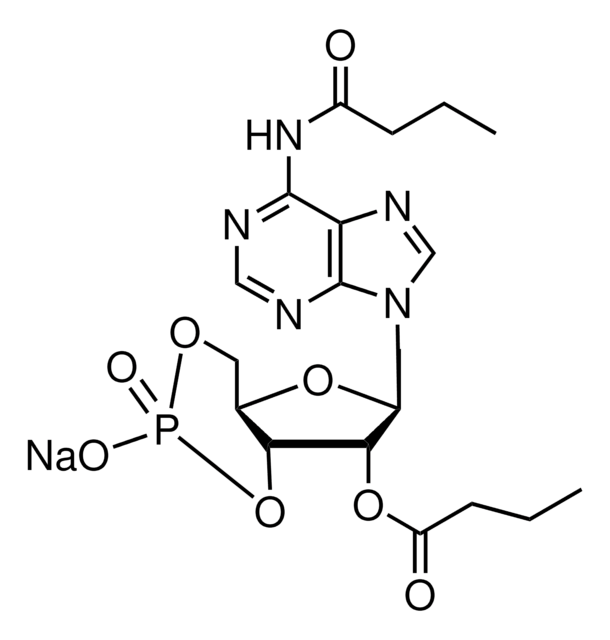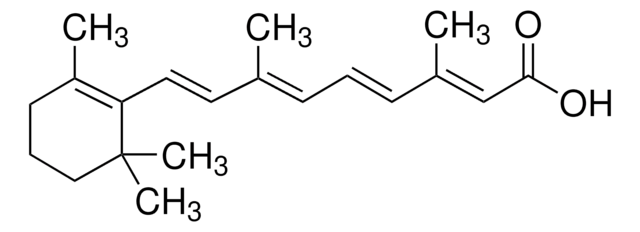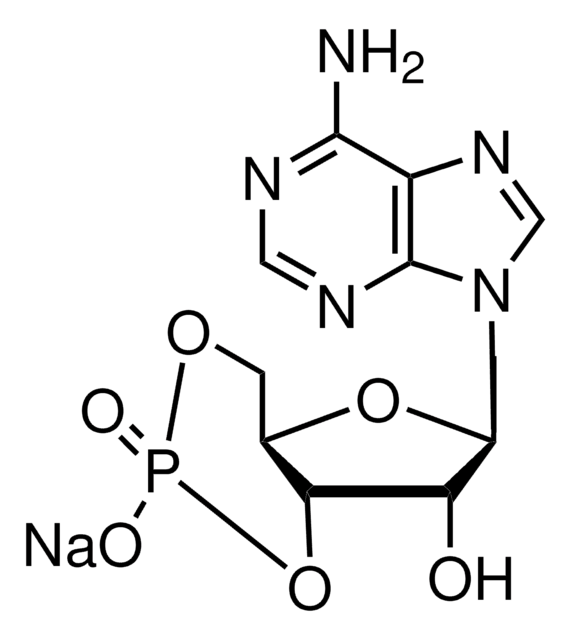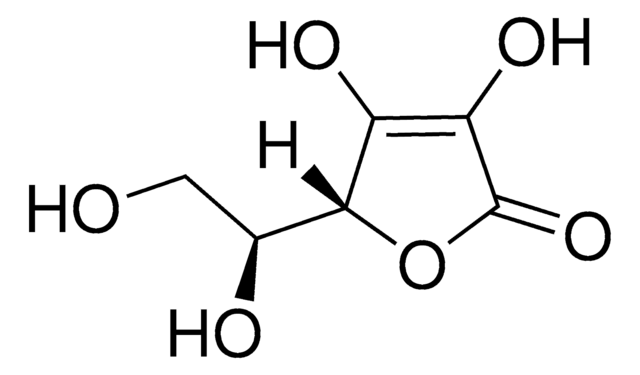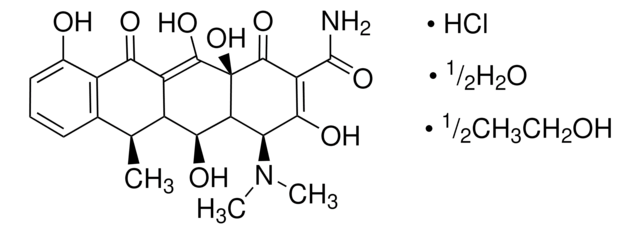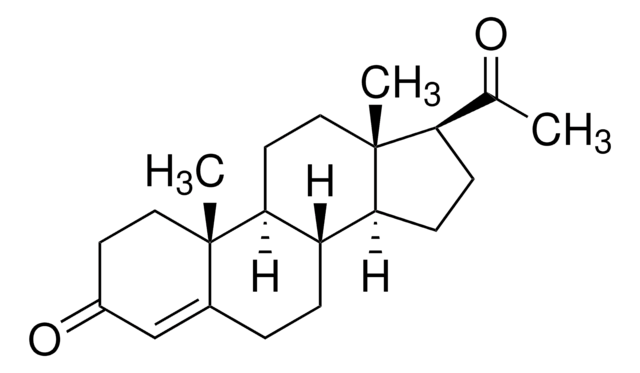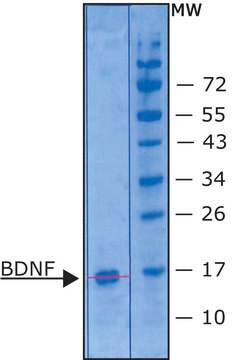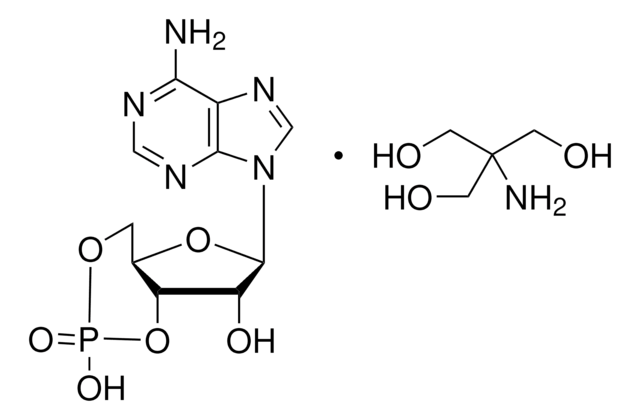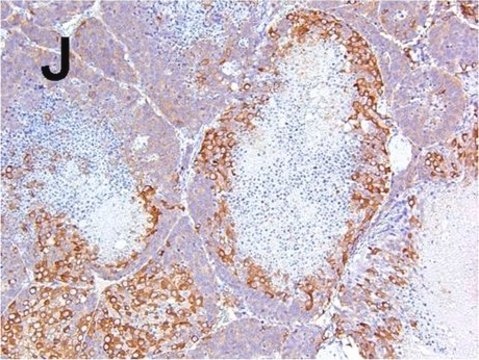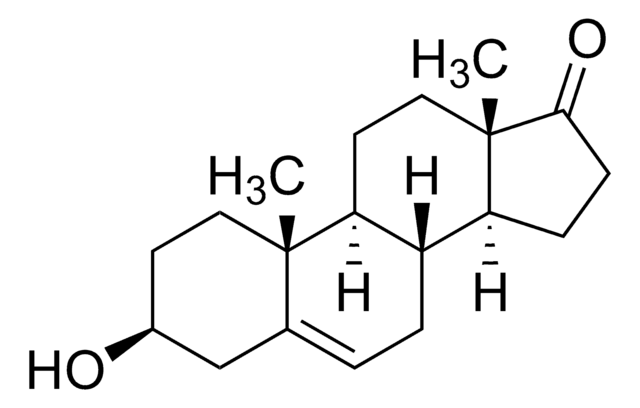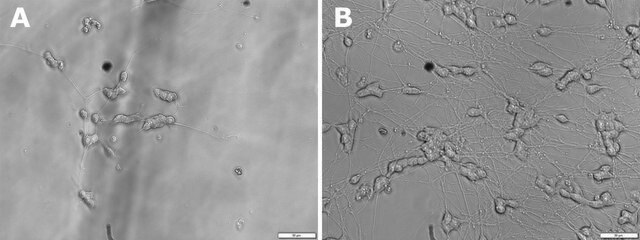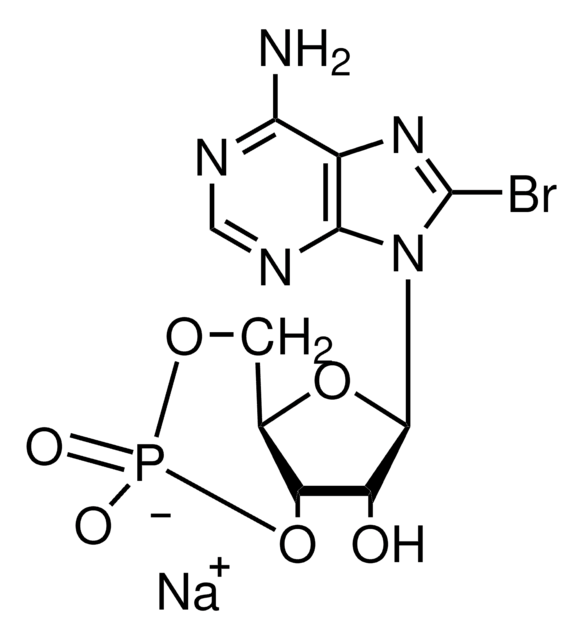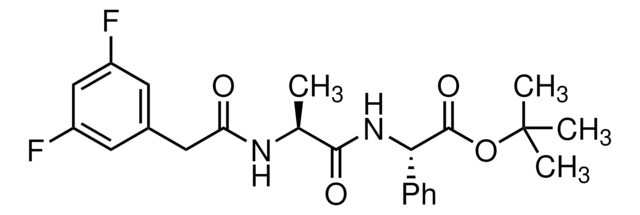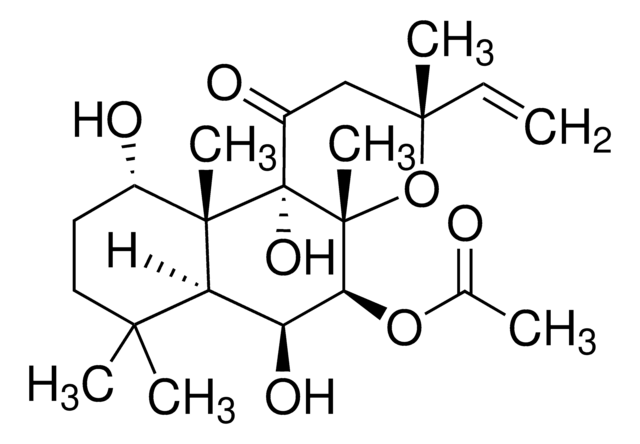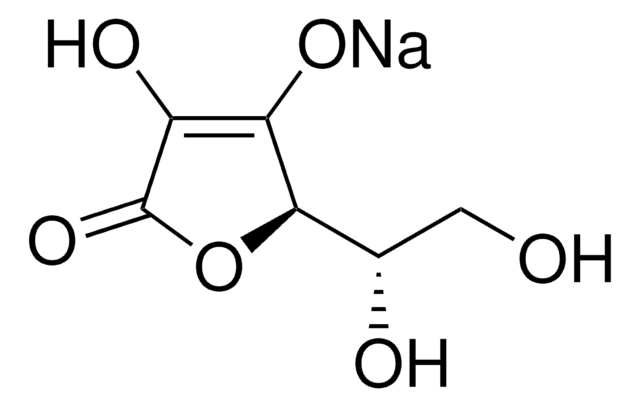28745-M
Adenosine 3′,5′-cyclic Monophosphate, N6,O2′-Dibutyryl-, sodium salt
≥95% (HPLC), lyophilized solid, PKA activator, Calbiochem®
Synonym(s):
Adenosine 3′,5′-cyclic Monophosphate, N⁶,O2′-Dibutyryl-, Sodium Salt, Dibutyryl-cAMP, Na
About This Item
Recommended Products
product name
Adenosine 3′,5′-cyclic Monophosphate, N⁶,O2′-Dibutyryl-, Sodium Salt, This Dibutyryl-cAMP, CAS 16980-89-5, is a cell-permeable cAMP analog that preferentially activates PKA.
Quality Level
assay
≥95% (HPLC)
form
lyophilized solid
manufacturer/tradename
Calbiochem®
storage condition
OK to freeze
desiccated (hygroscopic)
color
white
solubility
water: 1 mg/mL
storage temp.
−20°C
InChI
1S/C18H24N5O8P.Na/c1-3-5-11(24)22-16-13-17(20-8-19-16)23(9-21-13)18-15(30-12(25)6-4-2)14-10(29-18)7-28-32(26,27)31-14;/h8-10,14-15,18H,3-7H2,1-2H3,(H,26,27)(H,19,20,22,24);/q;+1/p-1/t10-,14-,15-,18-;/m1./s1
InChI key
KRBZRVBLIUDQNG-JBVYASIDSA-M
Related Categories
General description
Biochem/physiol Actions
PKA
Warning
Reconstitution
Other Notes
Tsai, C.H., et al. 1995. J. Cell. Physiol.164, 108.
Leszczynski, D., et al. 1994. Am. J. Pathol.145, 1265.
Miller, C., et al. 1994. J. Neurosci. Res.38, 56.
Hinko, A., and Soloff, M.S. 1993. Endocrinology 132, 126.
Ikeda, K., et al. 1993. J. Biol. Chem. 268, 1174.
Park, E.A., et al. 1993. J. Biol. Chem.268, 613.
Hei, Y-J., et al. 1991. Mol. Pharmacol. 39, 233.
Posternak, T., and Weimann, G. 1974. Methods Enzymol. 38, 399.
Legal Information
wgk_germany
WGK 2
flash_point_f
Not applicable
flash_point_c
Not applicable
Certificates of Analysis (COA)
Search for Certificates of Analysis (COA) by entering the products Lot/Batch Number. Lot and Batch Numbers can be found on a product’s label following the words ‘Lot’ or ‘Batch’.
Already Own This Product?
Find documentation for the products that you have recently purchased in the Document Library.
Customers Also Viewed
Our team of scientists has experience in all areas of research including Life Science, Material Science, Chemical Synthesis, Chromatography, Analytical and many others.
Contact Technical Service